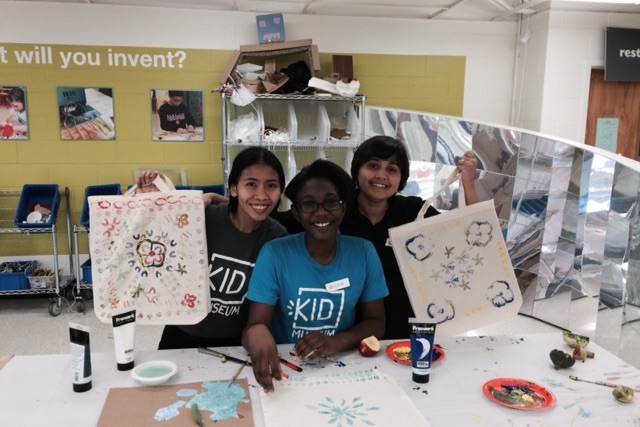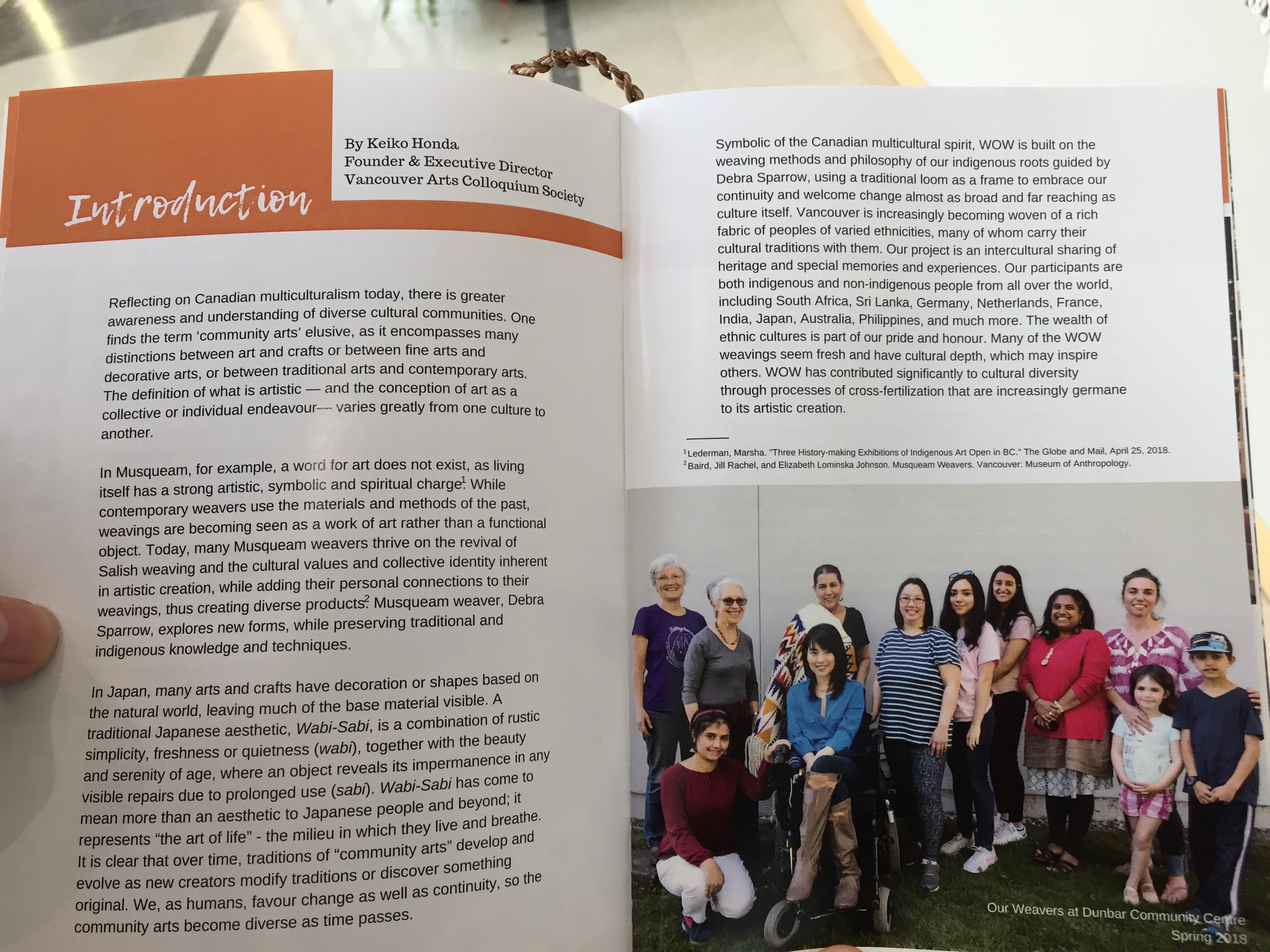A few illustration of my Workshop Content Design and Facilitation.
The overall goal is to help children assimilate learning seamlessly, brainstorm with their curious minds and develop a healthy learning attitude which will reflect aptly on their day-to-day activities.
Science
Electronics
Here, LED (light emitting diode), switch, wires and batteries have been put together to create projects like an
LED embedded slipper . It enables a child to understand basics of Electronics as well as Arts. A few other examples include
lanterns, circuit-embedded-wearable bands etc.
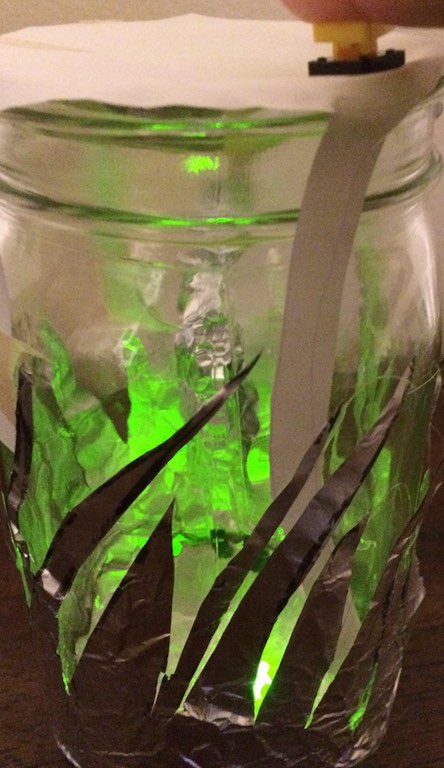
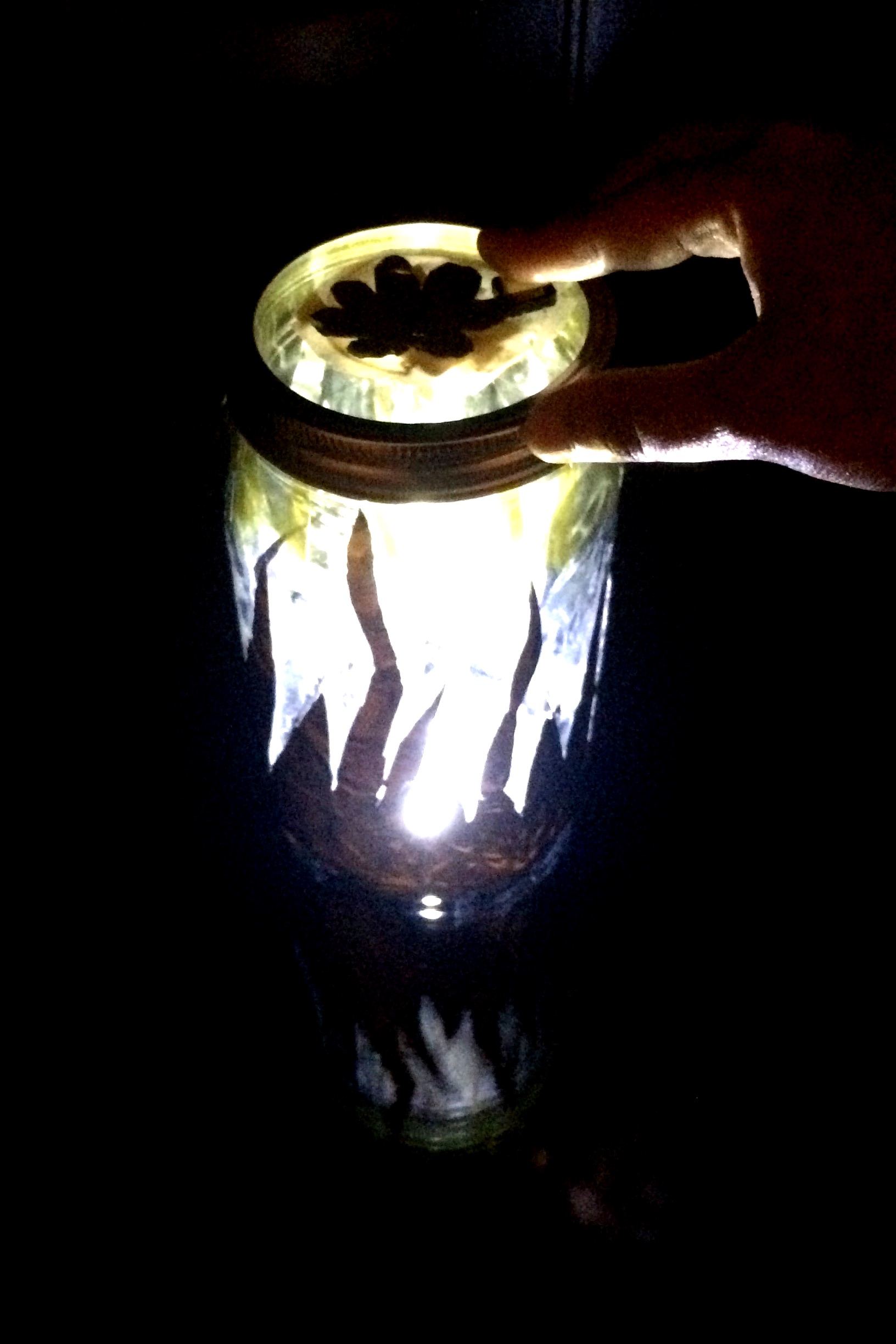
The lantern could also be made using sustainable materials like mason jars, aluminium foils and other regularly used kitchen items.
Mechanics
In Mechanics, motors and gears are some basic elements we all have studied when we were in schools. These examples here illustrate how a project can be made using DC motors.
Drawbot is a typical example of a robot that doodles and draws when allowed to move on a piece of paper with a pencil or sketch pen attached to it. It can be created using an unbalanced weight on top of a motor.
Tinkering further, one may design other bots like a Spritebot as we have made here. It's a flexible, programmable, human-driven bot that can be controlled using LEGO WeDo Motor sensors and computer programs like Scratch.
Computation
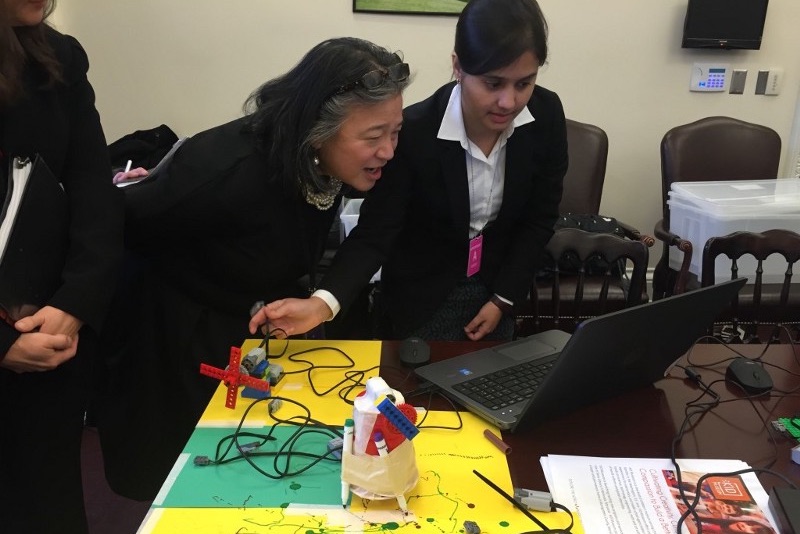
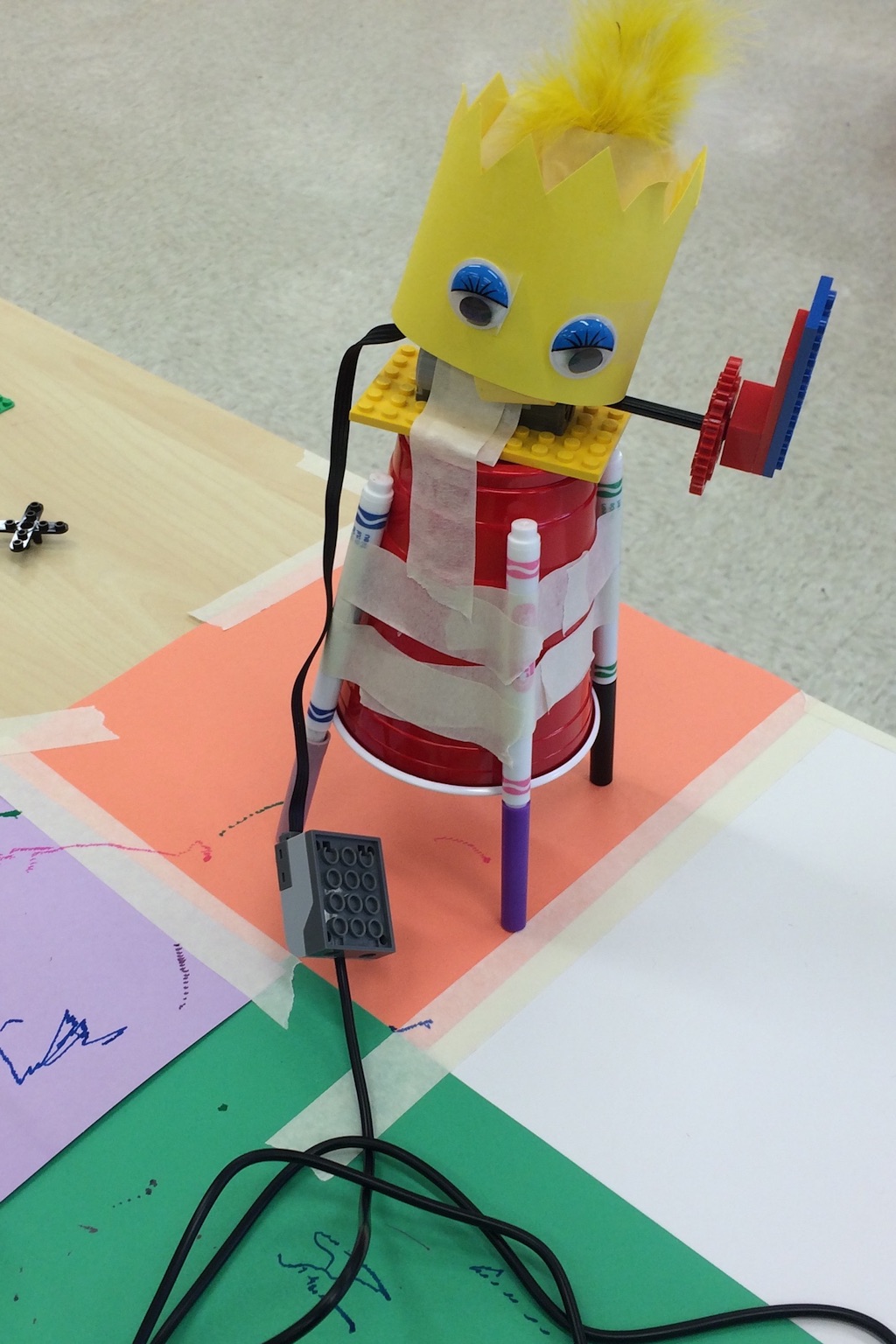
Computer programming is what I tell children a way to talk to the computers and make them do what we want. I have worked on projects and workshops in the past involving Creative Coding or Programming using
Scratch, a visual programming language developed by Life Long Kindergarten Group at the MIT Media Lab.
Programming is an art itself that allows a child to organize their thoughts to build a logic which the computer would follow as instructions to perform some functionalities.
The
Spritebots and
Windmills are some examples illustrated here, to exhibit how a program written on computers using Scratch can be further extended to connect to the physical world.
Arts
Music
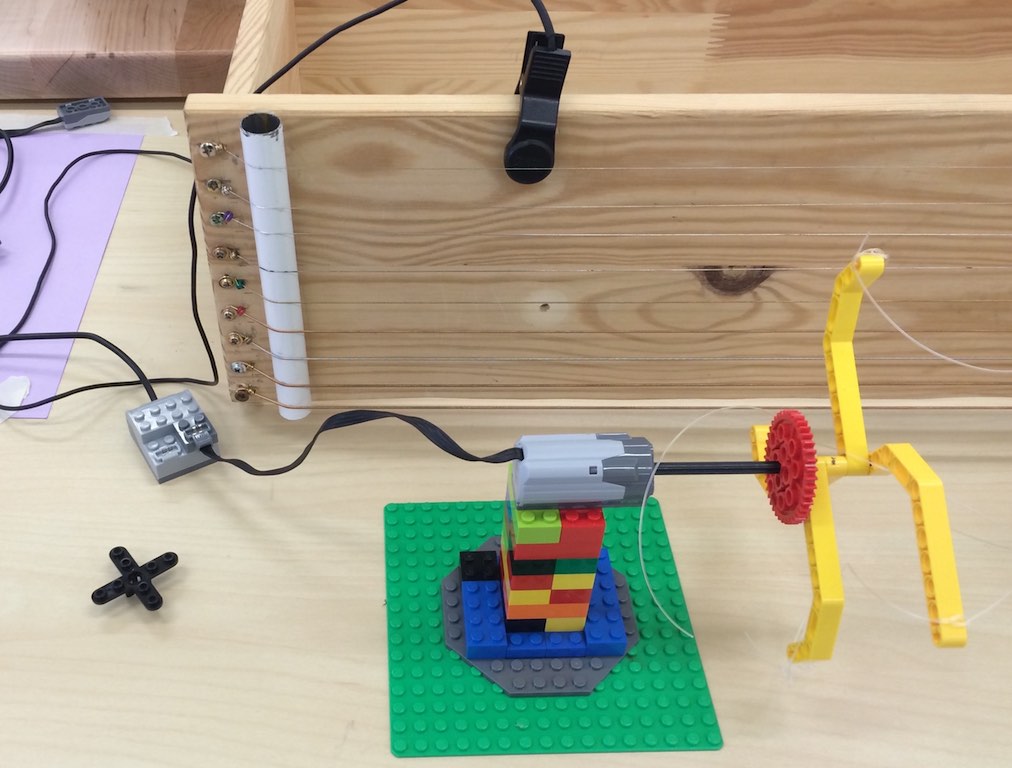
Here is an illustration of a
hand-made musical instrument. Children are experimenting to produce new tunes by brushing the arms of a LEGO Windmill against strings of this instrument in a rhythm.
Dance
As a child I loved dancing. But I also have friends who simply shy away from dance. Again there are some who enjoy coding. A project was built by merging Hip Hop dance moves along with Coding whereby, children would learn how to dance and capture their still images to form a motion picture.
Painting, Origami, Embroidery and Weaving
Art can be formed using different medium. We tried fabric paint using cut out blocks from vegetables to create designs on T-Shirts and Tote bags. Children design as shown in picture, hexagonal shapes, flowers, leaves and patterns around them.
Learning becomes fun when children form groups to create such designs, either working together with their peers or discussing with their parents and finally sharing their projects with other groups.
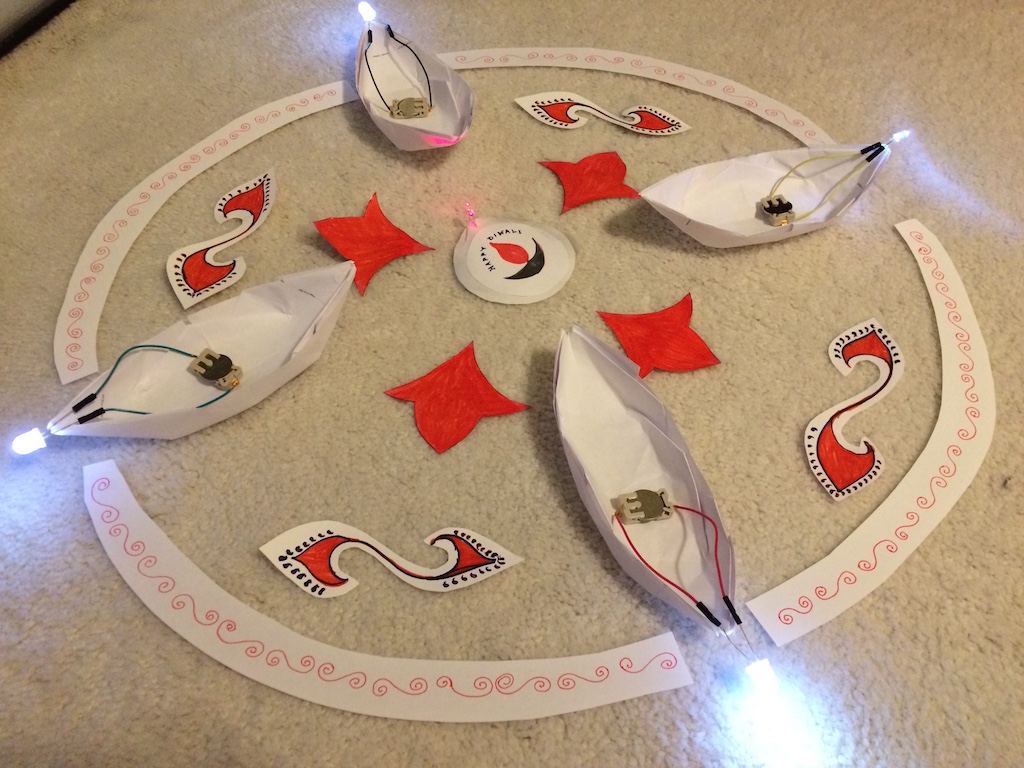
Origami is an art of paper folding which is often associated with Japanese culture. Here in this project children are learning how to create paper boats and using them to imitate Diyas, an oil lamp commonly used in India. Finally they apply concepts of circuit making, learnt in other workshops, to design these kinds of patterns as shown in the figure. In Indian culture this kind of art form is often termed as Rangoli and is usually created by people at home during Diwali - a festival of lights.
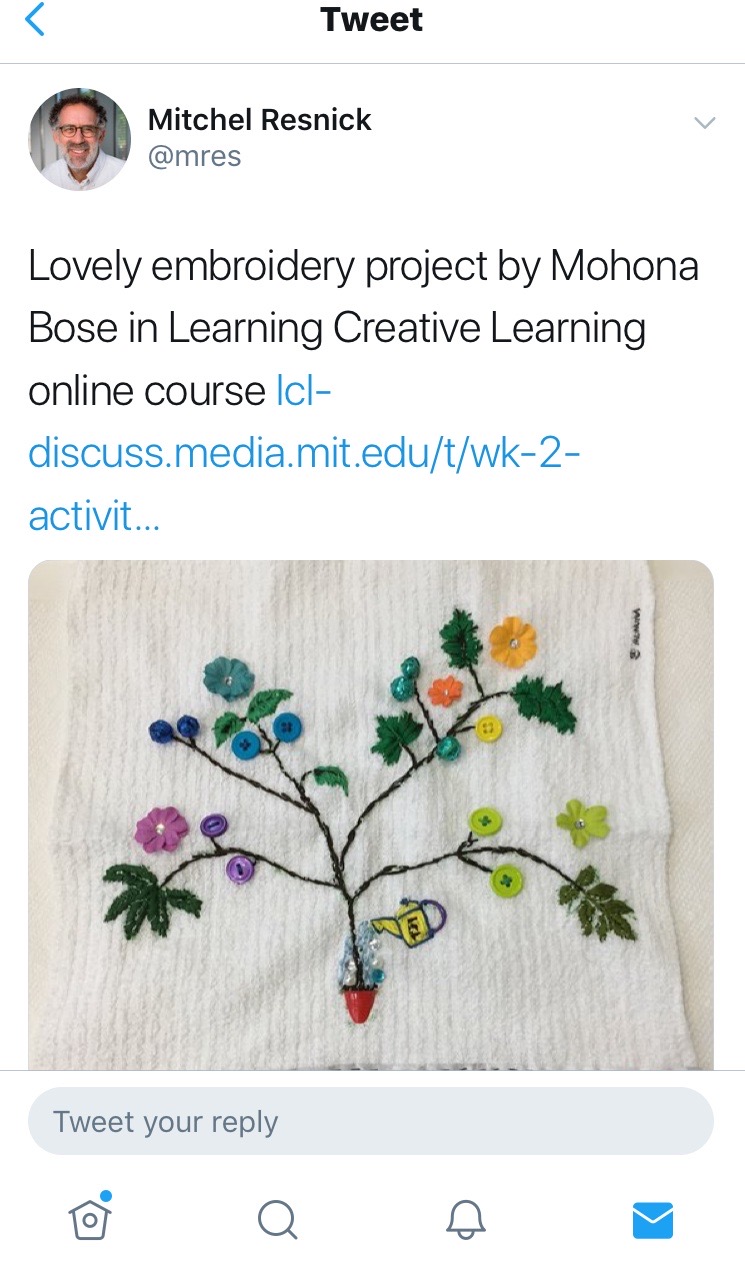
In the Week 2 Activity Challenge of MIT Media Lab's Learning Creative Learning (LCL 2018), I made this project where I had done some embroidery to reflect my learning experience with the community. The way diversity of human kind was being celebrated, by converting content of the course to every possible language and the way every learner picked it up so well, communicating their ideas and thoughts back and forth through channels and forums, it made me wonder how we were embracing diversity yet helping each one grow in their own spaces. So, the tag line I chose to put on my applique work was "The LCL Community is watering the plant named mankind, while celebrating its diversity."
This project received praise as a highlight of the week and was tweeted by professor Mitchel Resnick, LLK Group, Media Lab on Twitter as follows.
In Vancouver, British Columbia, I was learning handloom as a part of the community named Weaving Our Way. After a few meet ups some of our work got selected for a local exhibition held at Richmond Art Gallery, British Columbia, set up by the Vancouver Arts Colloquium Society. It somewhat looked like this as shown in the figure on your right.
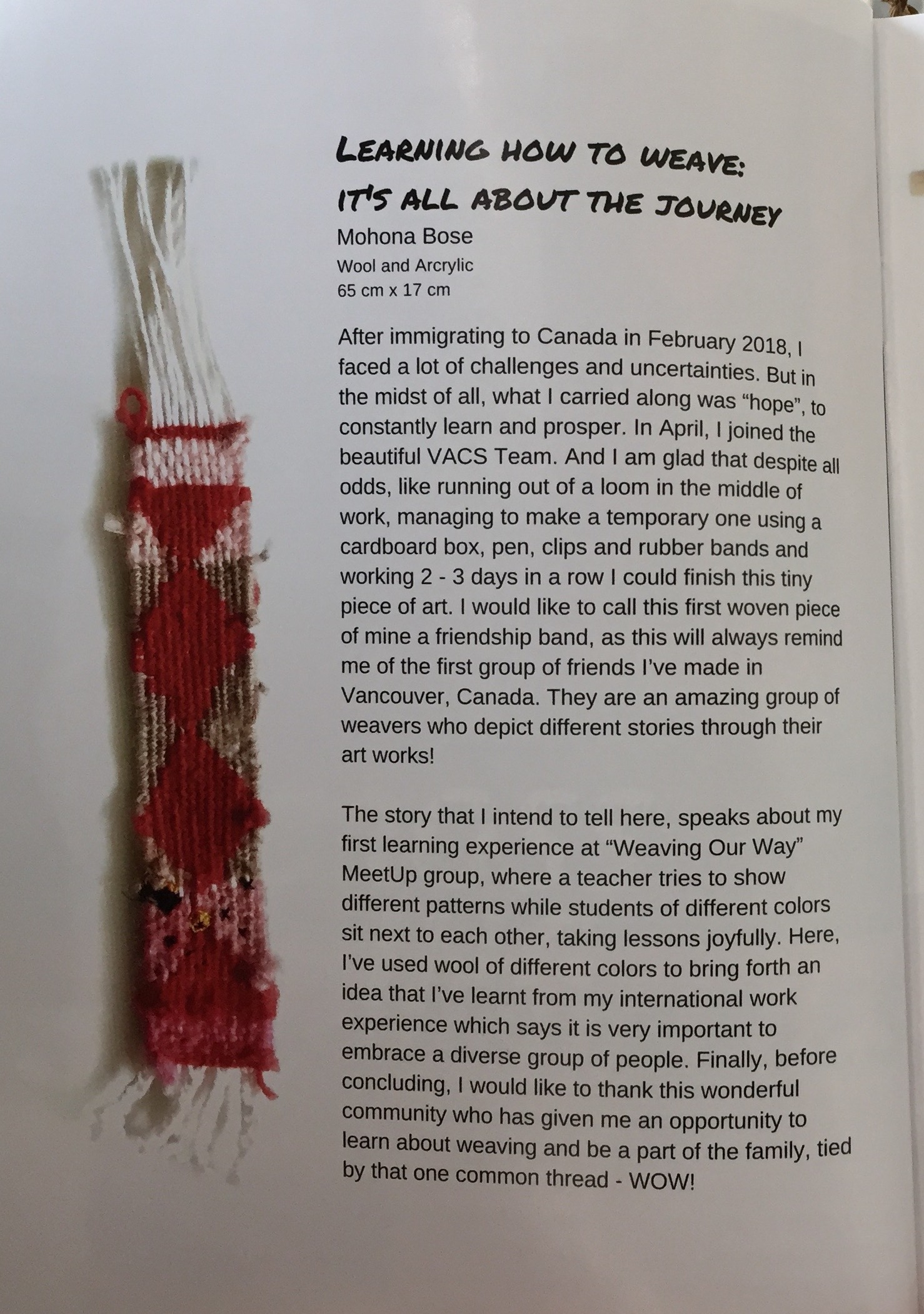
While making this piece I was in the middle of a transition, shifting homes. So assuming that this would be my first little piece for practice, I returned the loom that I had borrowed. The piece was abruptly cut out while half woven. But then one day I heard back a request for submitting my piece of work. However, I was not sure if I should buy a loom unless I settle at one place since we were new to that area. So, in order to complete this piece, I made a temporary hand loom, using cardboard, rubber bands, clips and tapes. It looked like this and was found supportive enough to recreate the tension in the threads.
That is how I completed this tiny piece of work and later named it as a friendship band in honor of the first group of friends I made through this community of learners.
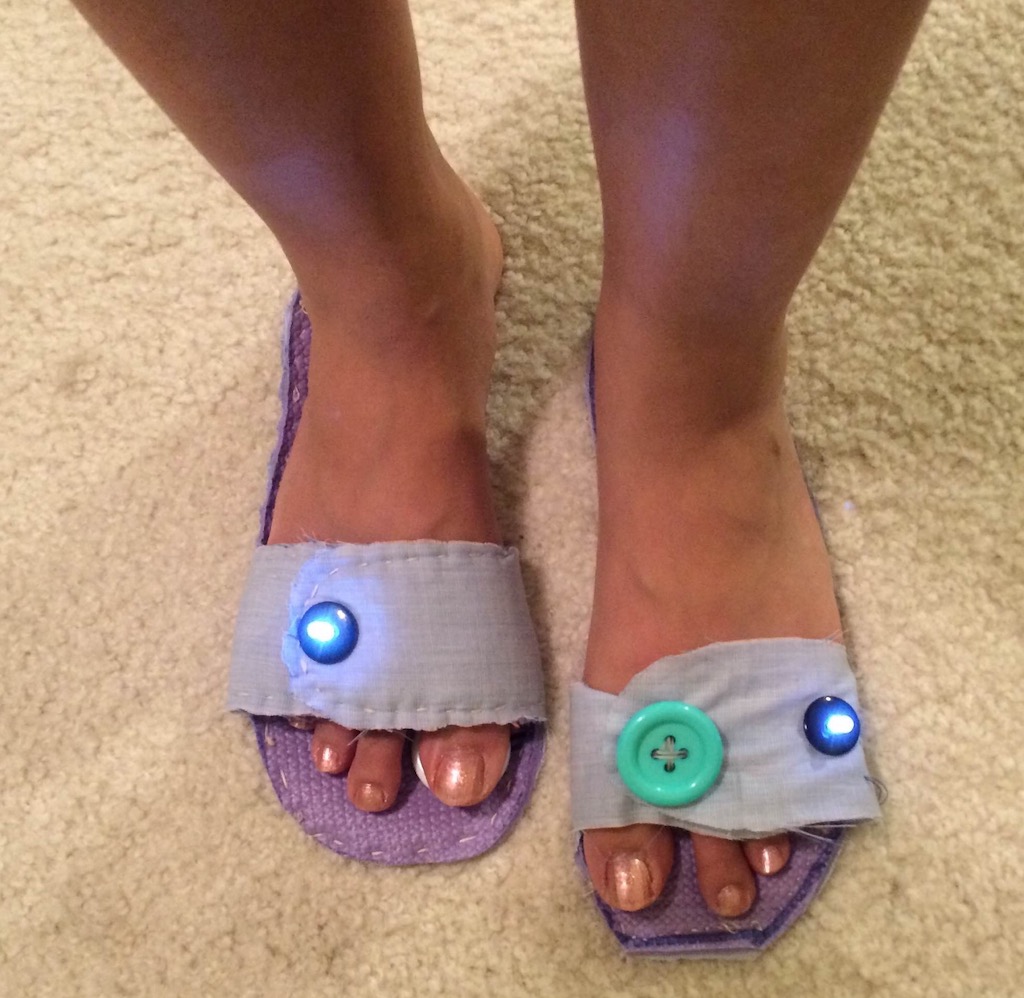




![]()

